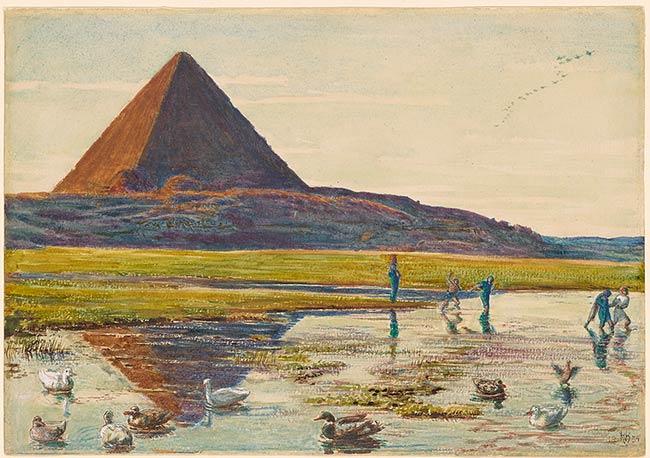
William Holman Hunt is best known for founding the Pre-Raphaelite Brotherhood in 1848 with fellow Royal Academy students, Sir John Everett Millais and Dante Gabriel Rossetti. The movement focused on the sincerity of art before Raphael, strongly promoted moral and biblical subjects, and turned to nature for instruction. Of the three artists, Hunt most closely embodied the principles of the group. He was a religious man, who, over the course of his career, traveled to the Middle East on a number of occasions between 1854 and 1892 to paint biblical scenery first hand. The present watercolor, dated 1854, was created on his first trip to the region. A superb example of the artist's fondness for bright, luminous colors, the sheet depicts the Great Pyramid of Khufu at Giza viewed from the east. Although Hunt was not particularly fond of the pyramids, or of Egyptian landscape in general, his desire for a poetic record led to several renderings of the subject. Instead of emphasizing the scale of this monumental site, Hunt gives almost equal importance to the figures and animals in the foreground. The study of the pyramid's reflection and the play of sunlight nearby is a testament to the Pre-Raphaelite affinity for observing light effects in nature.
Signed with monogram and dated 1854 lower right.
Judith Bronkhurst, William Holman Hunt, A Catalogue Raisonné, Volume II, no. D 78, repr. p. 50, Yale University Press New Haven and London, 2006.
